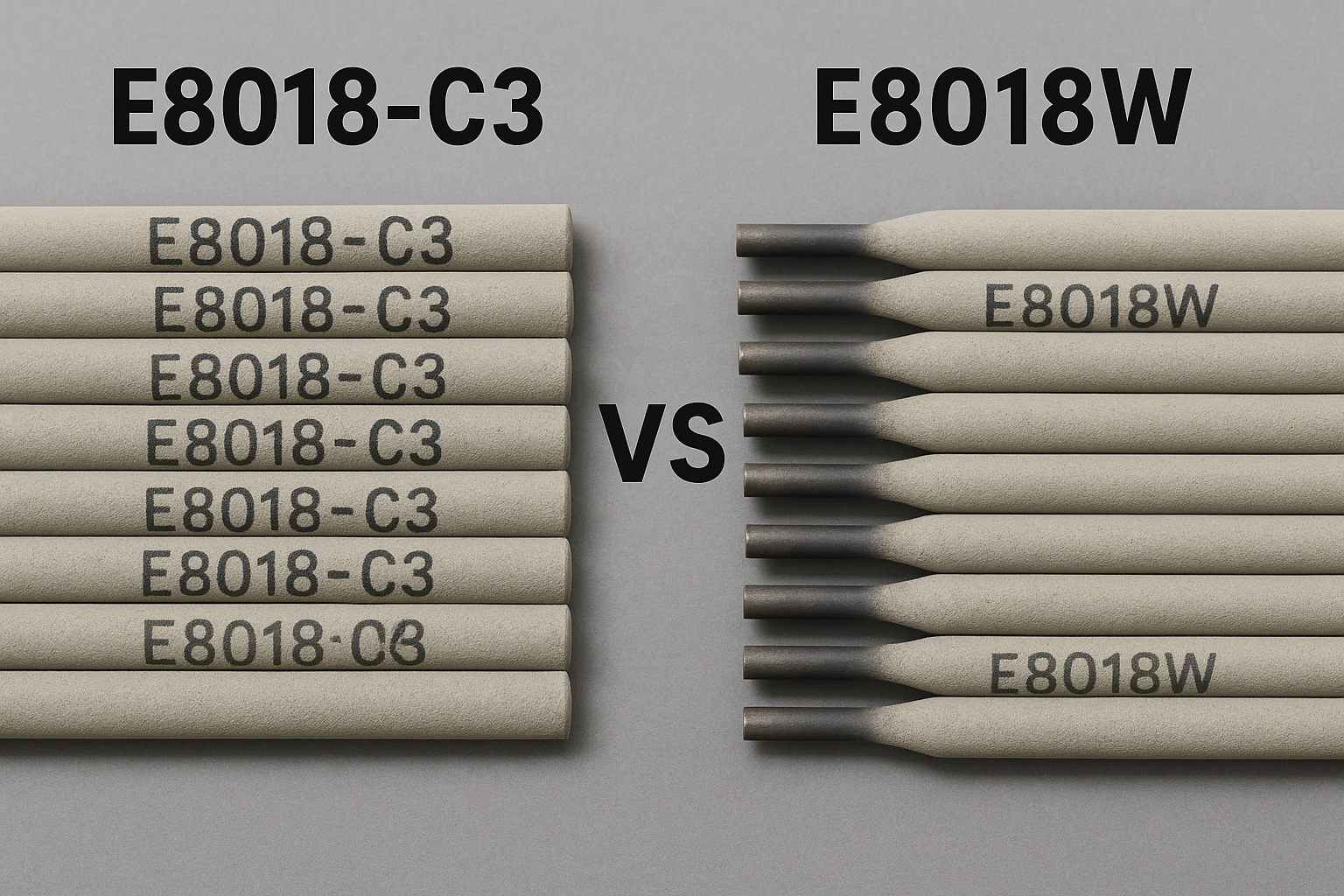**8018-C3 vs 8018-W Stick Electrodes: Product Review & Buying Guide**
When it comes to welding low-alloy steels, choosing the right stick electrode is crucial for achieving strong, reliable welds. Two popular options—8018-C3 and 8018-W—offer distinct advantages depending on your project’s requirements. Here’s a detailed comparison to help you make an informed decision.
—
**Performance**
*8018-C3* electrodes are renowned for their excellent mechanical properties, especially at low temperatures. They provide high ductility and impact strength, making them ideal for critical structural applications. The arc is stable, and slag removal is generally easy, resulting in smooth, clean welds.
*8018-W* electrodes are specifically designed for welding weathering steels (like ASTM A588 and A242). They offer good weldability and produce welds that match the corrosion resistance of the base metal. The arc is smooth, and the slag is easy to remove, but the welds may not be as tough at low temperatures as those made with 8018-C3.
—
**Composition**
*8018-C3* contains about 1% nickel, which enhances toughness and low-temperature performance. This makes it suitable for applications where the weld will be exposed to cold environments or dynamic loading.
*8018-W* is alloyed with small amounts of copper and other elements to match the composition of weathering steels. This ensures that the weld metal develops a protective oxide layer, just like the base metal, for superior atmospheric corrosion resistance.
—
**Applications**
*8018-C3* is best suited for structural welding in bridges, buildings, and pressure vessels, especially where low-temperature service is expected. It’s also a good choice for heavy equipment repair and fabrication.
*8018-W* is the go-to electrode for welding weathering steels used in outdoor structures, such as bridges, transmission towers, and architectural features. Its corrosion resistance makes it ideal for projects exposed to the elements.
—
**Pros and Cons**
*8018-C3 Pros:*
– Excellent low-temperature toughness
– High ductility and strength
– Versatile for various structural applications
*8018-C3 Cons:*
– Not specifically designed for weathering steels
– Slightly higher cost due to nickel content
*8018-W Pros:*
– Matches corrosion resistance of weathering steels
– Good weldability and appearance
– Ideal for outdoor structures
*8018-W Cons:*
– Lower impact toughness at low temperatures
– Limited to weathering steel applications
—
**Who Should Buy Which?**
Choose *8018-C3* if you need superior toughness and strength, especially in cold climates or for critical structural work. Opt for *8018-W* if you’re working with weathering steels and require welds that will resist atmospheric corrosion over time.
—
**What Makes Them Unique**
*8018-C3* stands out for its low-temperature performance, while *8018-W* is unique in its ability to match the corrosion resistance of weathering steels. Both offer reliable weldability and are trusted by professionals for their respective applications.
—
**Conclusion**
Selecting between 8018-C3 and 8018-W depends on your project’s specific needs—whether it’s low-temperature toughness or corrosion resistance. Both are excellent choices within their domains, ensuring strong, durable welds.
We may earn a small commission through Amazon affiliate links, at no extra cost to you.
- AWS: A5.5
- 10 LB Package – 8018-C3
- 1/8″ Stick Electrode
- Tensile Strength (psi) 80,000
- Yield Strength (psi) 68-80,000
Last update on 2025-12-05 / Affiliate links / Images from Amazon Product Advertising API



Leave a Reply